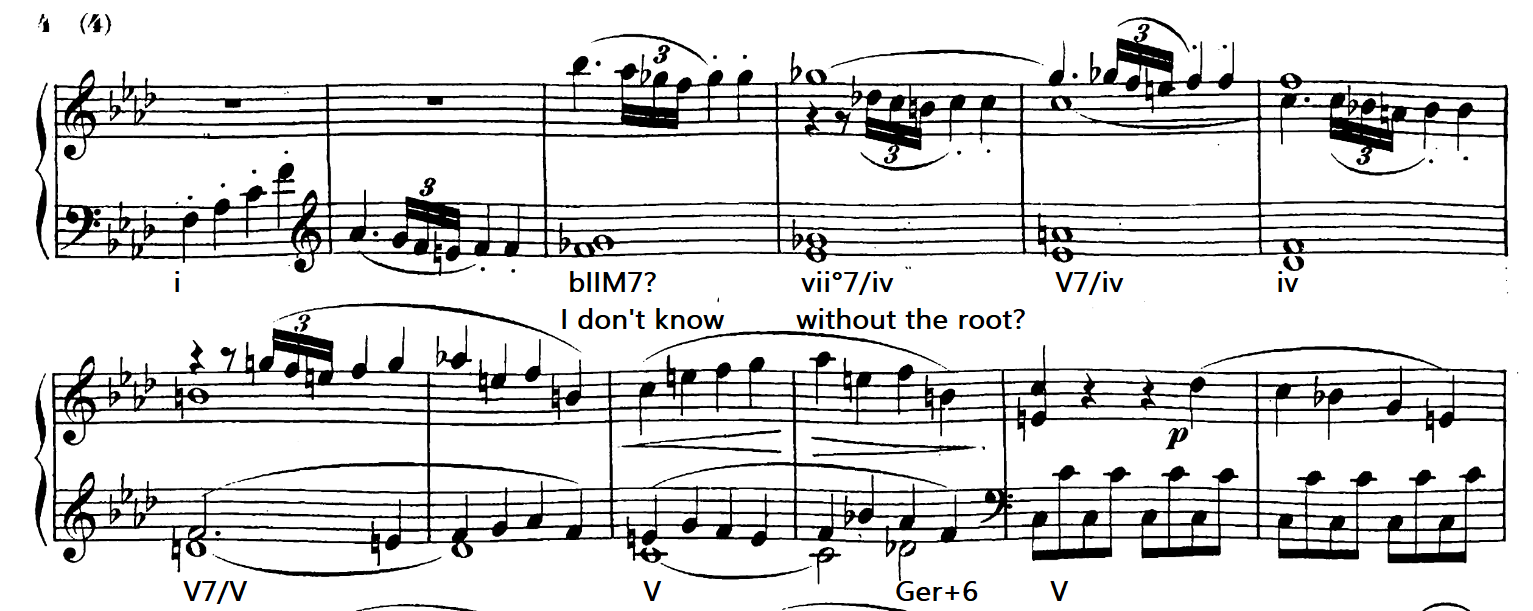So, I'm in the middle of orchestrating Beethoven's Piano Sonata no. 1 in F minor and I'm at the transition in the recapitulation of the first movement. In order to fill in that bass register that Beethoven didn't write(because it would be absurd not to if arranging the sonata for an orchestra), I need to know what the harmonies are, otherwise, it's going to sound horribly wrong. However, the first 2 chords, especially the first one is confusing me. I don't know what to call it, I don't know what that harmony on the Gb is supposed to be. With the one in the bar afterwards, I at least know that it's some sort of secondary dominant chord because it spells a diminished triad on C. Here's the passage in question:
And here's my attempt at a harmonic analysis of it:
Already, I know I'm probably wrong on at least the Gb chord and maybe the diminished chord as well.
My intuition is telling me that the diminished chord is probably a secondary vii°7 chord. Specifically, vii°7/iv. Now, I have seen Beethoven use this exact harmonic relation in his other bookend sonata, Piano Sonata no. 32 in C minor Op. 111, which uses 3 different diminished seventh chords in the first movement. So I know it could be vii°7/iv. And I know that the chord after it is V7/iv.
A move from vii°7 to V7 is quite common, as is the other way around, V7 to vii°7, as they both have the same function and have 3 common tones. However, you don't usually see chords like vii°7/iv or especially vii°7/vi. Usually when you see those kinds of harmonies, the composer has modulated and so it's better to view it in terms of the new key. Beethoven is not modulating here, he's staying in F minor. And there's another thing that's making me second guess my vii°7/iv analysis. The root of said chord isn't present at all, there is no A natural in the diminished chord.
That's the less confusing bit. The Gb right before the diminished chord, I just don't know how to analyze it. It looks on the page like maybe a shell voicing of a major seventh chord? But a major seventh in a minor key? On the Neopolitan of said minor key? That seems strange and like it's probably incorrect.
So, what are the first 2 chords of the transition after the F minor arpeggio? Is it in fact bIIM7 and vii°7/iv? Or is the diminished chord not a vii°7/iv because it lacks the root? Or is the GbM7 not really a GbM7?



